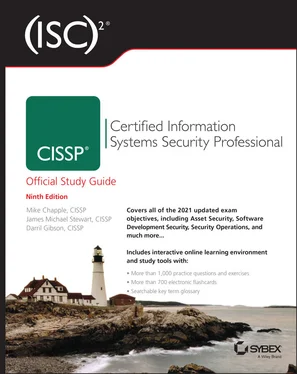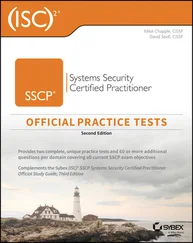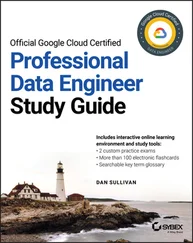Be able to explain proper termination policies.A termination policy defines the procedure for terminating employees. It should include items such as always having a witness, disabling the employee's network access, and performing an exit interview. A termination policy should also include escorting the terminated employee off the premises and requiring the return of security tokens and badges and company property.
Understand vendor, consultant, and contractor controls.Vendor, consultant, and contractor controls are used to define the levels of performance, expectation, compensation, and consequences for entities, persons, or organizations that are external to the primary organization. Often these controls are defined in a document or policy known as a service-level agreement (SLA).
Understand policy compliance.Compliance is the act of conforming to or adhering to rules, policies, regulations, standards, or requirements. Compliance is an important concern to security governance. On a personnel level, compliance is related to whether individual employees follow company policy and perform their job tasks in accordance with defined procedures.
Know how privacy fits into the realm of IT security.Know the multiple meanings/definitions of privacy, why it is important to protect, and the issues surrounding it, especially in a work environment.
Be able to define overall risk management.The process of identifying factors that could damage or disclose data, evaluating those factors in light of data value and countermeasure cost, and implementing cost-effective solutions for mitigating or reducing risk is known as risk management. By performing risk management, you lay the foundation for reducing risk overall.
Understand risk analysis and the key elements involved.Risk analysis is the process by which upper management is provided with details to make decisions about which risks are to be mitigated, which should be transferred, and which should be accepted. To fully evaluate risks and subsequently take the proper precautions, you must analyze the following: assets, asset valuation, threats, vulnerability, exposure, risk, realized risk, safeguards, countermeasures, attacks, and breaches.
Know how to evaluate threats.Threats can originate from numerous sources, including IT, humans, and nature. Threat assessment should be performed as a team effort to provide the widest range of perspectives. By fully evaluating risks from all angles, you reduce your system's vulnerability.
Understand qualitative risk analysis.Qualitative risk analysis is based more on scenarios than calculations. Exact dollar figures are not assigned to possible losses; instead, threats are ranked on a scale to evaluate their risks, costs, and effects. Such an analysis assists those responsible for creating proper risk management policies.
Understand the Delphi technique.The Delphi technique is simply an anonymous feedback-and-response process used to arrive at a consensus. Such a consensus gives the responsible parties the opportunity to properly evaluate risks and implement solutions.
Understand quantitative risk analysis.Quantitative risk analysis focuses on hard values and percentages. A complete quantitative analysis is not possible because of intangible aspects of risk. The process involves valuing assets and identifying threats and then determining a threat's potential frequency and the resulting damage, which leads to the risk response tasks of the cost/benefit analysis of safeguards.
Be able to explain the concept of an exposure factor (EF).An EF is an element of quantitative risk analysis that represents the percentage of loss that an organization would experience if a specific asset were violated by a realized risk. By calculating exposure factors, you are able to implement a sound risk management policy.
Know what single loss expectancy (SLE) is and how to calculate it.SLE is an element of quantitative risk analysis that represents the cost associated with a single realized risk against a specific asset. The formula is SLE = asset value (AV) * exposure factor (EF).
Understand annualized rate of occurrence (ARO).ARO is an element of quantitative risk analysis that represents the expected frequency with which a specific threat or risk will occur (in other words, become realized) within a single year. Understanding AROs further enables you to calculate the risk and take proper precautions.
Know what annualized loss expectancy (ALE) is and how to calculate it.ALE is an element of quantitative risk analysis that represents the possible yearly cost of all instances of a specific realized threat against a specific asset. The formula is ALE = single loss expectancy (SLE) * annualized rate of occurrence (ARO).
Know the formula for safeguard evaluation.In addition to determining the annual cost of a safeguard, you must calculate the ALE for the asset if the safeguard is implemented. Use this formula: ALE before safeguard – ALE after implementing the safeguard – annual cost of safeguard = value of the safeguard to the company, or (ALE1 – ALE2) – ACS.
Know the options for handling risk.Reducing risk, or risk mitigation, is the implementation of safeguards and countermeasures. Assigning risk or transferring a risk places the cost of loss a risk represents onto another entity or organization. Purchasing insurance is one form of assigning or transferring risk. Risk deterrence is the process of implementing deterrents to would-be violators of security and policy. Risk avoidance is the process of selecting alternate options or activities that have less associated risk than the default, common, expedient, or cheap option. Accepting risk means management has evaluated the cost/benefit analysis of possible safeguards and has determined that the cost of the countermeasure greatly outweighs the possible cost of loss due to a risk. It also means that management has agreed to accept the consequences and the loss if the risk is realized.
Be able to explain total risk, residual risk, and the controls gap.Total risk is the amount of risk an organization would face if no safeguards were implemented. To calculate total risk, use this formula: threats * vulnerabilities * asset value = total risk. Residual risk is the risk that management has chosen to accept rather than mitigate. The difference between total risk and residual risk is the controls gap, which is the amount of risk that is reduced by implementing safeguards. To calculate residual risk, use the following formula: total risk – controls gap = residual risk.
Understand control types.The term control refers to a broad range of controls that perform such tasks as ensuring that only authorized users can log on and preventing unauthorized users from gaining access to resources. Control types include preventive, deterrent, detective, compensation, corrective, recovery, and directive. Controls can also be categorized by how they are implemented: administrative, logical, or physical.
Understand security control assessment (SCA).An SCA is the formal evaluation of a security infrastructure's individual mechanisms against a baseline or reliability expectation.
Understand security monitoring and measurement.Security controls should provide benefits that can be monitored and measured. If a security control's benefits cannot be quantified, evaluated, or compared, then it does not actually provide any security.
Understand risk reporting.Risk reporting involves the production of a risk report and a presentation of that report to the interested/relevant parties. A risk report should be accurate, timely, comprehensive of the entire organization, clear and precise to support decision making, and updated on a regular basis.
Читать дальше












